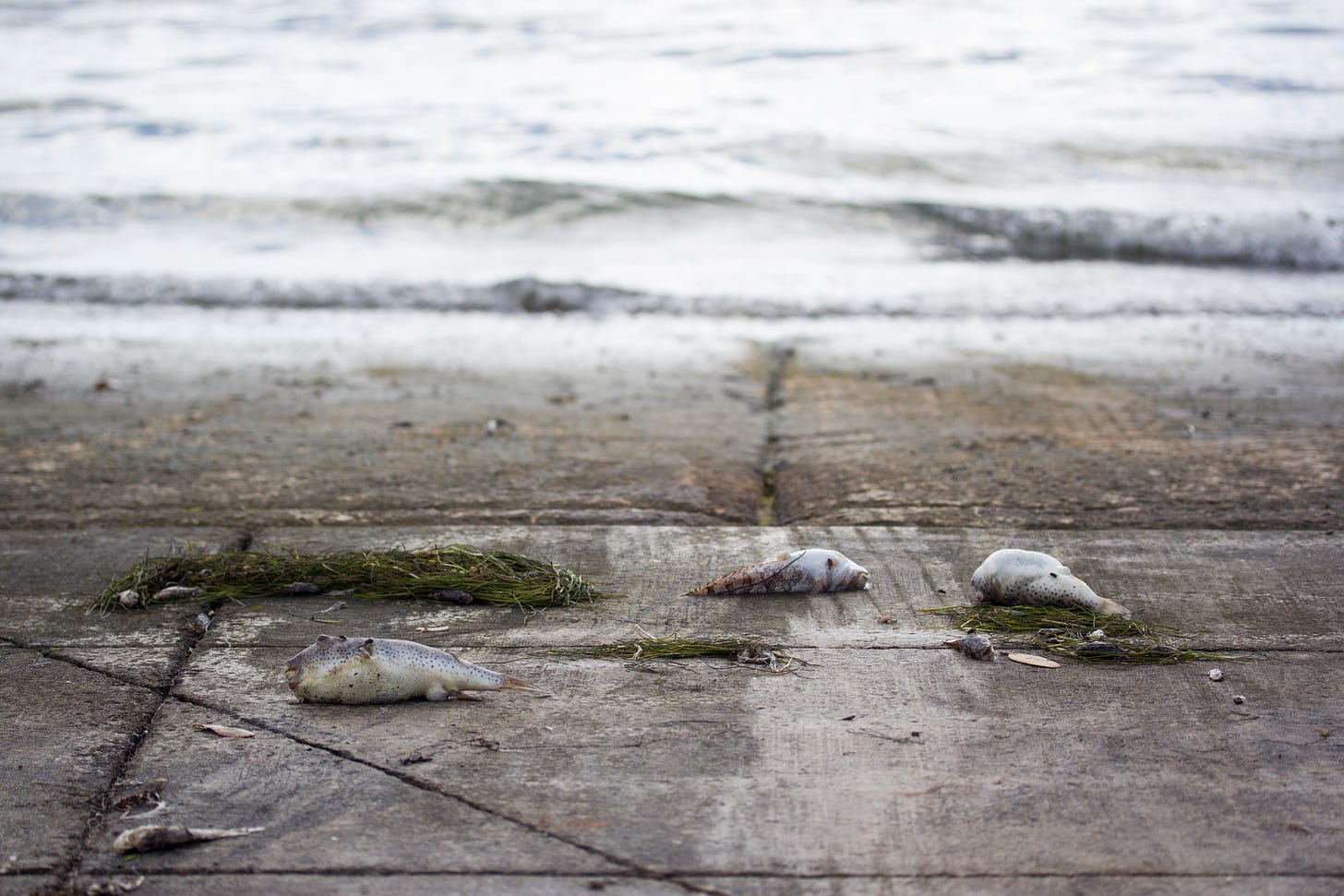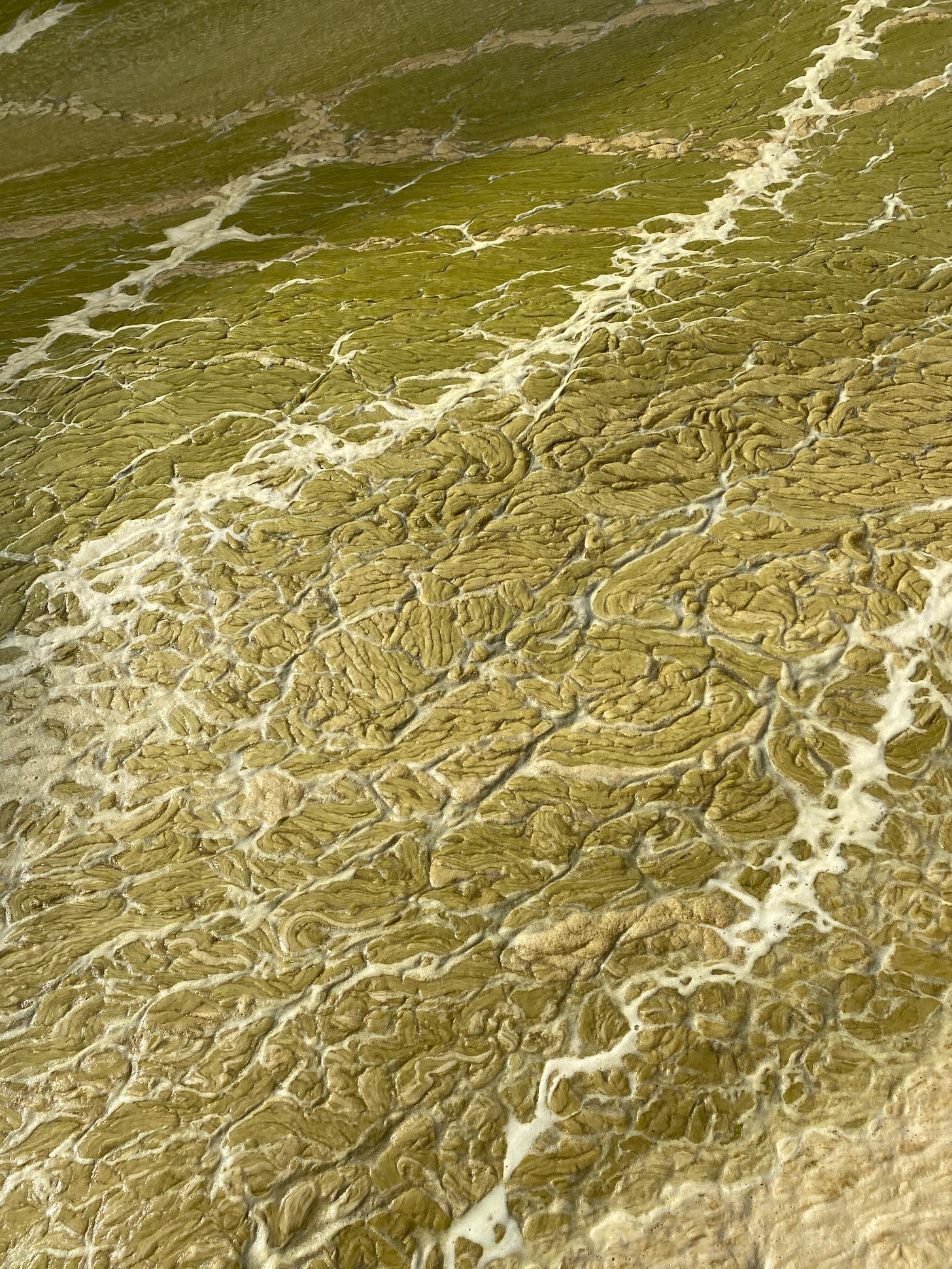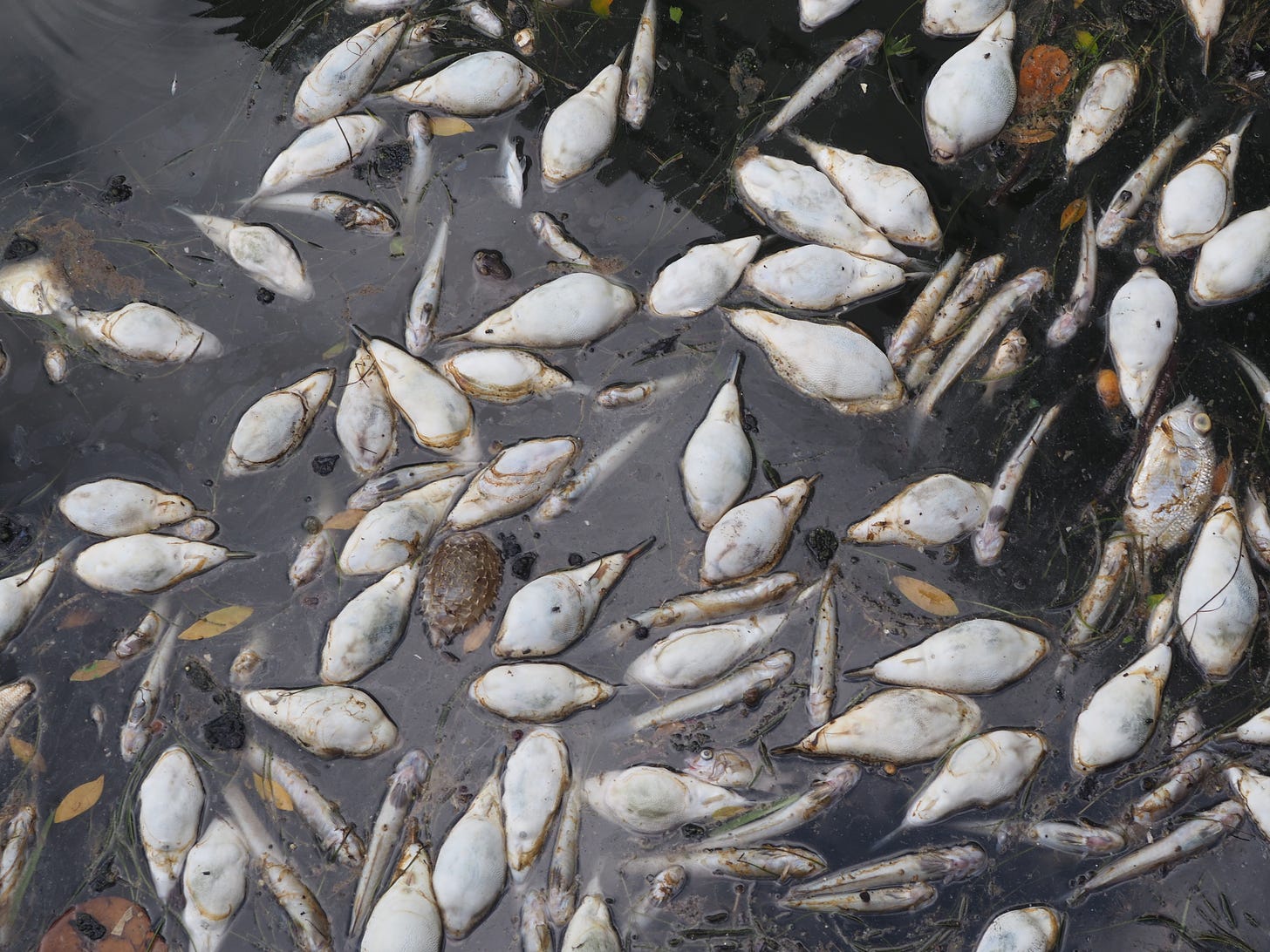In August of 2019, the National Oceanic and Atmospheric Administration released a study comprising 20 years worth of data on pollution which reveals that we are at risk of losing Biscayne Bay. The study shows that from 1995-2014, 80-90% of seagrass had been loss throughout different parts of the bay.
Fast forward – on August 10, 2020, Biscayne Bay residents were distraught at what they witnessed, and even more disturbed by what they smelled coming from the Bay.
Thousands of floating fish carcasses were seen washed up along the shores of northern Biscayne Bay and Morningside Park. A sight leaving many residents perplexed to what led to such a tragedy.
“The water ran out of oxygen, fish and wildlife need oxygen. The nutrient pollution coming from septic tanks, storm water run-offs, industrial waste, and the use of fertilizer that spills into the Bay all contributed to the fish kills”, says Rachel Silverstein, Executive Director of Miami Waterkeeper.
“These nutrient pollutants feed algae — resulting in algae blooms. When it’s too much bacteria, algae uses up all of the oxygen — leaving fish with not enough oxygen to breathe”, adds Rachel.
The potential dreadful implications that stem from this crisis should sound the alarm for the city of Miami, residents, and elected officials.
“The South Florida economy is built on high end real estate and rapid tourism. If the Bay goes south, the economic loss will be devastating”, says Todd Crowl, Director of the FIU Institute of Environment.
“Clean water is what makes Miami, Miami, if we lose Biscayne we lose a lot of value from a recreational, cultural, and economic standpoint”, adds Rachel.
The bay has experienced decades of neglect and mistreatment. The recent fish kill events demonstrates that this ongoing negligence is nearing its culmination. We must help the bay restore its balance because we are the ones causing the imbalance.
Solutions to restoring the Bay
Nutrient pollutants are stemming from multiple sources. Todd Crowl suggests that we should, “find out where all the pollutants are coming from and fix the infrastructure around it”.
The major culprits are industrial waste, use of fertilizer, storm water run-offs, and outdated and malfunctioning septic tanks.
“People that live along the canal are putting fertilizer on their lawns which spills into the canal that meshes into the bay”, says Chris Langdon, Professor of Marine Biology, University of Miami.
“There needs to be an enforcement structure. The state needs to establish a nutrient concentration criteria – if over certain regulations that would trigger fines for those who violate”, stated Chris.
Rachel advocates for storm water retrofits to address the storm water run-offs. Storm water retrofits will slow down and lower the amount of runoff, and clean it up before it enters streams and lakes.
Many homes in Miami-Dade are not connected to the city’s sewer system. They are connected to septic tanks, that spills into the ground water and leaks into the bay.
“56 % of septic tanks are not working properly. They are not working properly due to sea level rise. You need two feet of dry ground of bottom around septic tanks and water tables and sea level rise has taken that away”, says Rachel. Rachel advocates for septic to sewer conversions and sewage upgrades.
As the city begins to transition from septic tanks to sewer conversions, Todd Crowl suggests that the city should create a “comprehensive map of septic systems”. This will allow the city to identify which communities are still running on septic tanks — therefore the city knows where infrastructure improvements are needed.
Take accountability
2020 has been a year that has caught many of us by surprise. Nonetheless, it is the year that our world and nation needs to take heed to the lessons that the world is trying to teach us — if we listen.
We have had an abundance of time to sit and reflect on our own lives and to reprioritize what matters most to us. As a country, we must learn to live in harmony with our environment and lose our sense of entitlement to earth, life is a privilege.
Election day, November 3, is swiftly approaching. We must realize the power of our voice individually and collectively and rise up.
“Local elections matter and they reflect your background. Do research on candidate’s views and see if they align with yours. Consider candidate’s environmental record”, Rachel said.
We must hold elected officials accountable for their promises, make sure their actions follow their words. Restoring the bay will take collective action, let them know how important this is to you.
At the end of the day, the responsibility of maintaining the bay’s health falls on us. “Take personal accountability for our impact on the environment, reduce the use of single use plastic, and avoid pouring harsh chemicals down the drain — they end up in the bay”, says Rachel.
Subscribe to the Miami Waterkeeper’s newsletter and follow them on social media platforms. They will inform you when there are opportunities to speak to elected officials and to partake in volunteer events.
Miami Waterkeeper also created “1,000 Eyes on The Water” program, that teaches ordinary people how to document and report pollution. The program is free and only takes 1 hour to complete.
The future is in our hands — what we decide to do today determines the world our children and grandchildren will inherit.
Photos taken by : Miami Waterkeeper, Dylann Turffs, Anthony Williams, Adam Cohen






